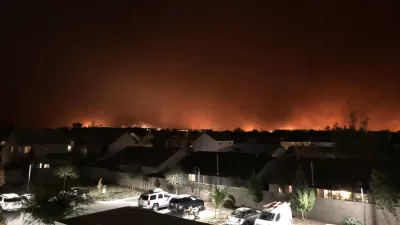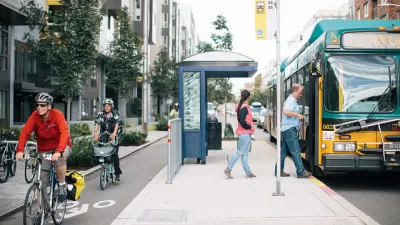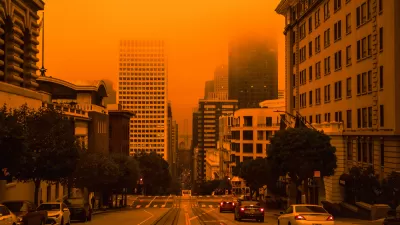As development pushes into more wildfire-prone areas and climate change makes extreme weather conditions more common, more Americans are experiencing the destructive impacts of climate disasters.

Last year, over 40 percent of Americans lived in counties struck by climate change-induced extreme weather events, while more than 80 percent experienced at least one day of extreme heat, according to research from The Washington Post, report Sarah Kaplan and Andrew Ba Tran.
Disasters affected regions across the country, with wildfires ravaging the West, heat waves killing hundreds in the Pacific Northwest, and hurricanes causing massive damage on the East Coast. "In the country that has generated more greenhouse gases than any other nation in history, global warming is expanding its reach and exacting an escalating toll."
In a steadily warming world, disasters can happen in places, at times and with intensities never seen before. They overwhelm infrastructure that wasn’t built to deal with them. They catch communities unprepared.
While some disasters—such as the deep freeze that paralyzed Texas infrastructure or the outbreak of tornadoes in Kentucky—can't be attributed to climate change, according to scientists, the record-breaking Pacific Northwest heat dome would not have been possible without it.
The authors note that climate change isn't the only way humans are contributing to more destructive disasters. Some factors, like development in high-risk areas, human-caused ignition sources, and exposed power lines can be mitigated with local land use regulations, public policy, and awareness campaigns. While fighting climate change takes a global effort, policymakers can also make impactful changes on a local scale by taking action to implement forward-looking policies and help residents build strong social support systems to help each other during a crisis.
FULL STORY: More than 40 percent of Americans live in counties hit by climate disasters in 2021

Rethinking Redlining
For decades we have blamed 100-year-old maps for the patterns of spatial racial inequity that persist in American cities today. An esteemed researcher says: we’ve got it all wrong.

Montreal Mall to Become 6,000 Housing Units
Place Versailles will be transformed into a mixed-use complex over the next 25 years.

Planetizen Federal Action Tracker
A weekly monitor of how Trump’s orders and actions are impacting planners and planning in America.

Seattle Safe Parking Site to Close, Relocate
A nonprofit leases lots during permitting stages to erect tiny homes and RV safe parking sites for unhoused residents. But the model means constant uncertainty and displacement.

LA ‘Mobility Wallet’ Increased Quality of Life for Participants
The city distributed a monthly $150 transportation subsidy to 1,000 low-income Angelenos. It dramatically improved their lives.

Texas, California Rail Projects Seek Out Private Funding
In the wake of Trump’s cuts to high-speed rail projects, rail authorities are looking to private-public partnerships to supplement their budgets.
Urban Design for Planners 1: Software Tools
This six-course series explores essential urban design concepts using open source software and equips planners with the tools they need to participate fully in the urban design process.
Planning for Universal Design
Learn the tools for implementing Universal Design in planning regulations.
City of Camden Redevelopment Agency
City of Astoria
Transportation Research & Education Center (TREC) at Portland State University
Regional Transportation Commission of Southern Nevada
Toledo-Lucas County Plan Commissions





























